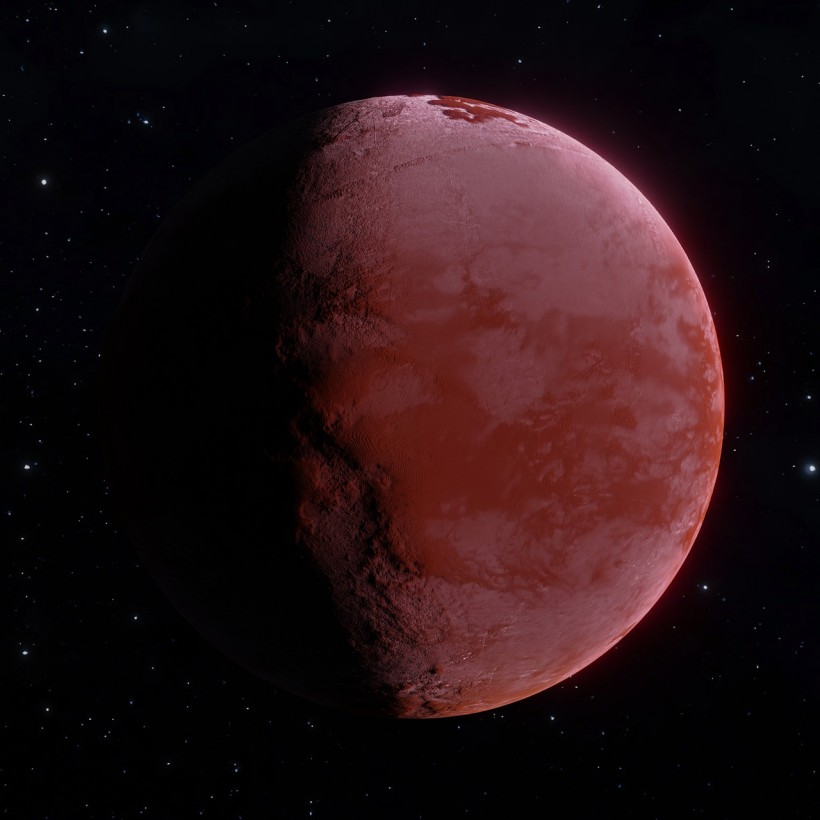Saturn's largest moon, Titan, is a strange world that is a little bit Earthlike. It has lakes, rivers, and seas but is filled with liquid methane and other hydrocarbons. Meanwhile, its atmosphere was thick and hazy with dotted methane clouds. Now, NASA reported that the James Webb Space Telescope (JWST) observed two of those clouds during an observation on November 4.
Scientists are thrilled about the discovery given that it is the only moon in the Solar System that has a dense atmosphere, which is four times denser than Earth's atmosphere.

James Webb Space Telescope Detects Clouds on Saturn's Largest Moon Titan
Detecting Clouds on Titan's Hazy Atmosphere
The atmosphere on Titan is made up of nitrogen and methane that gives it the fuzzy and orange look. ?But due to its haziness, visible light is obscured which makes it difficult to discern its features. Fortunately, JWST observes the universe in infrared light that help it spot a bright cloud in the northern hemisphere of Titan and detected the second cloud in its atmosphere.
NASA said that the larger cloud was over the northern polar region near the largest known liquid sea of methane on Titan, called Kraken Mare. Planetary scientist Heidi Hammel from the Association of Universities for Research in Astronomy and the project lead for JWST said that the discovery was fantastic.
Astronomer Conor Nixon from NASA's Goddard Space Flight Center in Maryland arranged for the space telescope to spend a total of 15 hours in its first year observing Titan, Space.com reported. Nixon's team wanted to study its atmosphere to map the distribution of haze and identify new gases.
As expected, the scientists are thrilled at the data JWST sent. Scientists conducted further analysis of the data and found that there are two clouds. Due to that, they are inspired to find a way to check back in on those clouds to understand how they change. The team collaborated with Keck Observatory in Hawaii and also snag observations of Titan two days after JWST.The two observations coincided with each other and found two clouds in the same positions, although they looked like they somehow changed in shape.However, scientists noted that there is a possibility that Keck did not see the same clouds given the high cloud activity on Titan's northern hemisphere during its late summer season when it is catching more solar radiation. Those clouds could have been newly formed in the same spot.READ ALSO: Saturn Moon Titan Has San Andreas Fault-Like Tectonics, Experts Claim
Implications of JWST's Observation
The team is not yet done mining observations from JWST's powerful camera Near-Infrared Camera (NIRCam). According to CNN, the data is still being analyzed, which will give more information about Titan's atmosphere and surface.
The Cassini spacecraft has been observing Saturn and its moons for 13 years and with the help of JWST, scientists are optimistic to learn more and reveal the cause of a bright feature over the south pole of Titan.
Nixon said that the cloud observations were a long time coming. They waited for many years to use the space telescope to study the atmosphere, and weather patterns of Saturn's largest moon, and to see gain detailed insight into it despite its hazy features.
Scientists noted that Titan's atmosphere is incredibly interesting because of its methane clouds and storms, as well as its history and what it could be in the future. they plan to conduct more observations on Titan in June to provide additional information about the gases on the moon.
RELATED ARTICLE: Titan's Landscape: Saturn's Largest Moon Similar to Earth, Here's Why
Check out more news and information on Space in Science Times.














